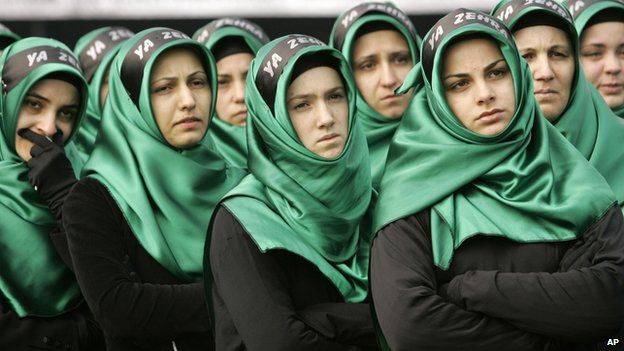Who are the Shia?In early Islamic history the Shia were a political faction - literally "Shiat Ali" or the party of Ali.
The Shia claimed the right of Ali, the son-in-law of the Prophet Muhammad, and his descendants to lead the Islamic community.
Ali was killed as a result of intrigues, violence and civil wars which marred his caliphate. His sons, Hassan and Hussein, were denied what they thought was their legitimate right of accession to caliphate. Hassan is believed to have been poisoned by Muawiyah, the first caliph (leader of Muslims) of the Umayyad dynasty.
His brother, Hussein, was killed on the battlefield along with members of his family, after being invited by supporters to Kufa (the seat of caliphate of Ali) where they promised to swear allegiance to him.

Women from Turkey's Shia minority observe a religious procession in Istanbul
These events gave rise to the Shia concept of martyrdom and the rituals of grieving.
There is a distinctive messianic element to the faith and Shia have a hierarchy of clerics who practise independent and ongoing interpretation of Islamic texts.
Estimates of the number of Shia range from 120 to 170 million, roughly one-tenth of all Muslims.
Shia Muslims are in the majority in Iran, Iraq, Bahrain, Azerbaijan and, according to some estimates, Yemen. There are large Shia communities in Afghanistan, India, Kuwait, Lebanon, Pakistan, Qatar, Syria, Turkey, Saudi Arabia and the UAE.
Linkback:
https://tubagbohol.mikeligalig.com/index.php?topic=79714.0